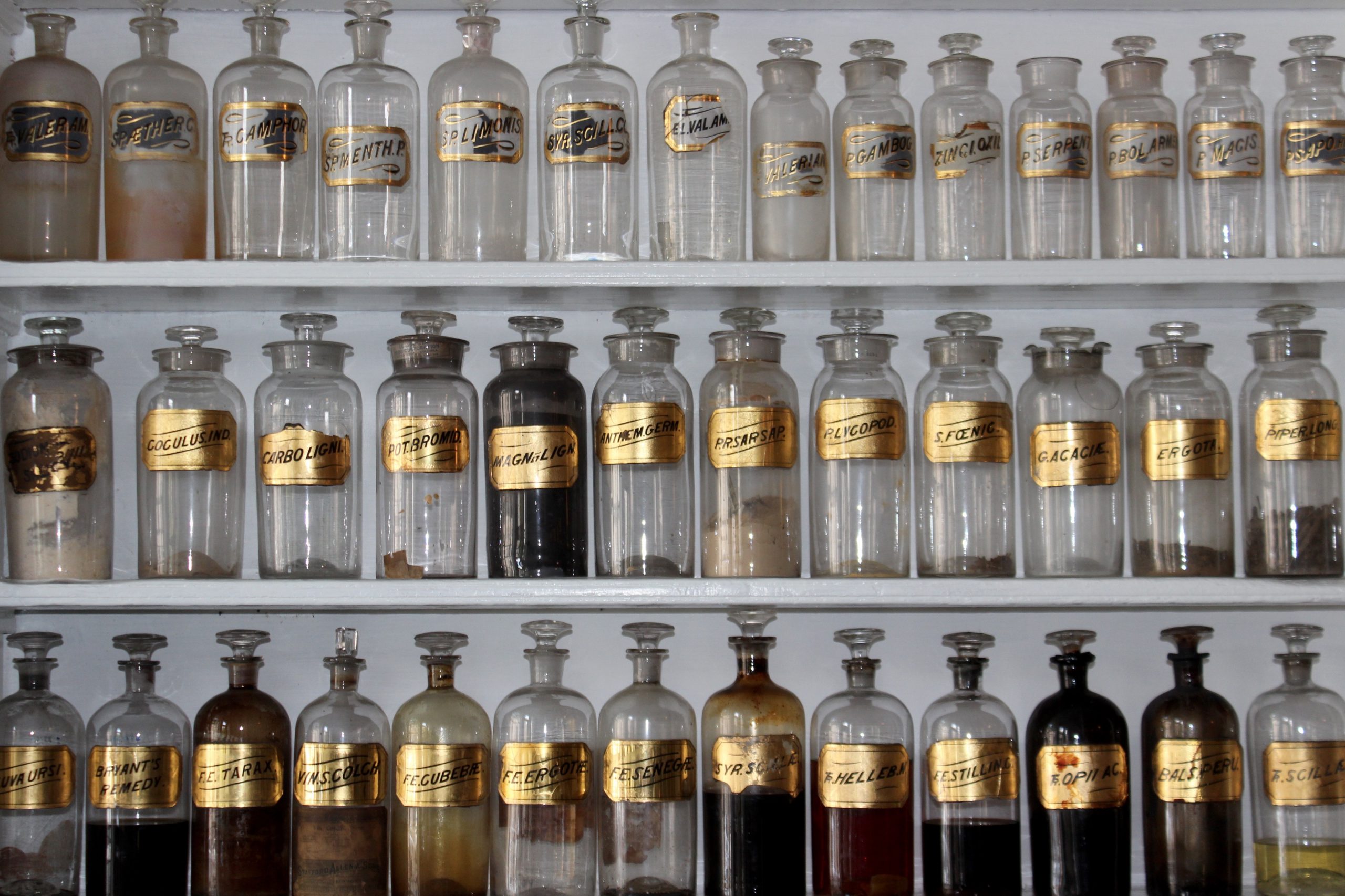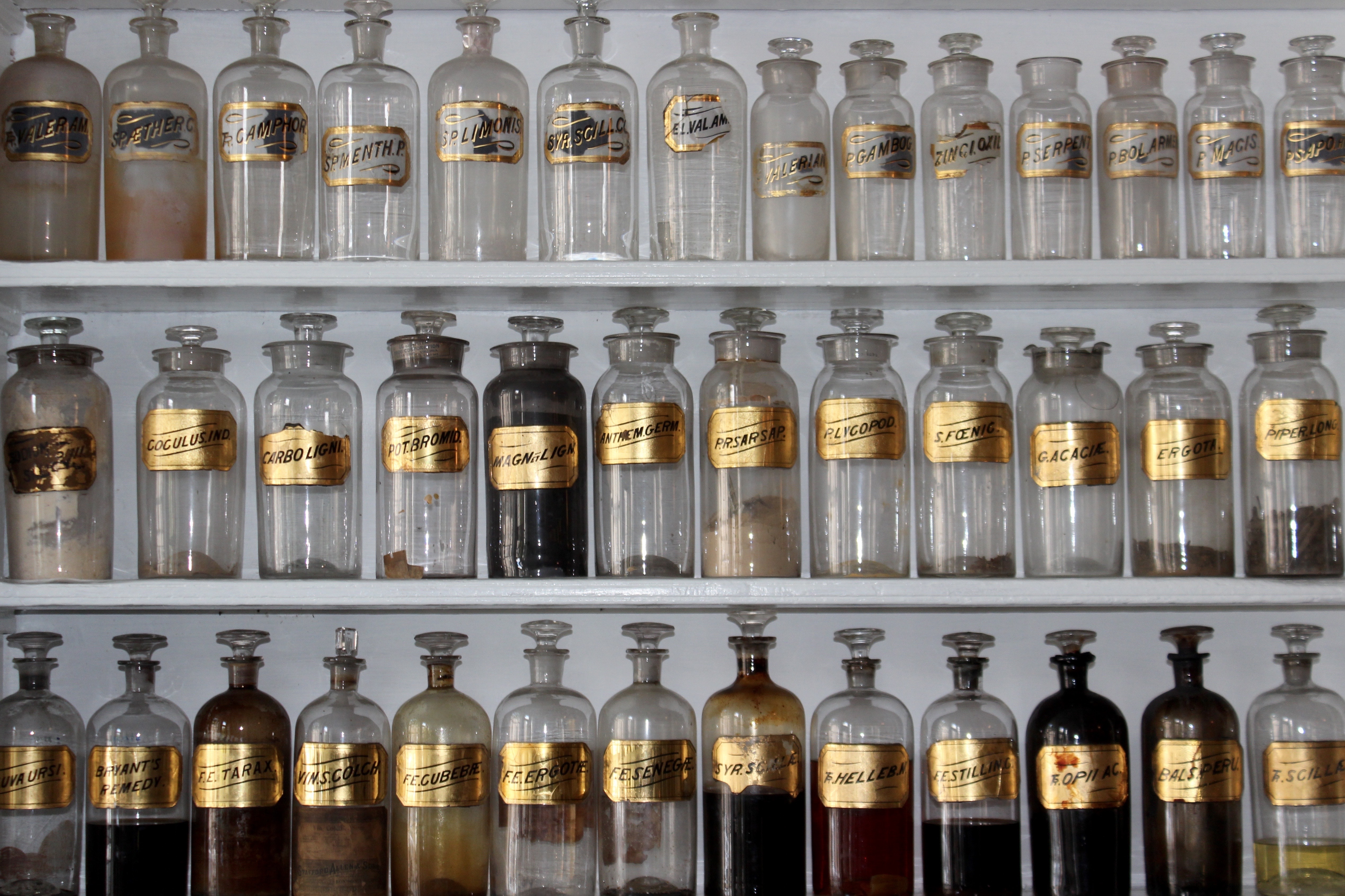As should be obvious from their name, FLUOROquinolones are fluorinated drugs.
A little history for you: Nalidixic Acid is the backbone of all fluoroquinolones. It was discovered by George Lesher in 1962, and it started to be used as an antibiotic in 1967. Nalidixic acid, and the first-generation quinolones that were derived from it, were not widely used because they lacked bioavailability and were associated with the rapid development of bacterial resistance (1). To increase bioavailability, a fluorine atom was added to the nalidixic acid backbone at position 6, bonded to carbon (2 and 3). This increased bioavailability of the quinolones greatly, and their use increased exponentially (more than 26 million prescriptions for fluoroquinolones were given out in 2011 alone).
In addition to increasing the bioavailability of fluoroquinolones, did the addition of the fluorine increase the toxicity of the fluoroquinolones?
How much of Fluoroquinolone Toxicity is due to the quinolone core and how much of it is due to the fluorine addition that, as it is intended, penetrates cells and increases the quinolone efficacy and potency? Is Fluoroquinolone Toxicity quinolone toxicity, or is it fluorine toxicity?
I’ve always been of the opinion that the quinolone core is toxic and that the fluorine just increases the bioavailability and toxicity of the quinolones, and that fluoroquinolone toxicity is quinolone toxicity, not fluorine toxicity. However, recently I’ve been reading about the effects of fluoride, and, more specifically, fluoro-organic metabolites like fluoracetate and fluorocitrate, and I have been considering the possibility that fluoroquinolone toxicity is a result of the addition of the fluorine atom to the quinolone core. I intend to explore the possibility that fluoroquinolones are metabolized into poisonous metabolites like fluoracetate and fluorocitrate in future posts. In this post, I’ll start the conversation by looking at some evidence that the quinolone core is the toxic part of fluoroquinolones, as well as some evidence that the fluorine is the main source of toxicity.
There is a lot of grey area in the question of whether fluoroquinolone toxicity is caused by the quinolone core, the fluorine attachment, or both. It is likely, in my opinion, that both are toxic. There are undoubtably complex feedback and feed-forward loops in our biochemistry that may make one increase the toxicity of the other too.
Argument #1 – Quinolones were toxic before the fluorine was added.
Nalidixic acid and the first-generation quinolones that weren’t fluorinated, have serious and severe adverse effects. For example, Cinoxacin, a first-generation unfluorinated quinolone, has the following adverse-effects (4):
- difficulty breathing
- fever
- increased sensitivity to the sun or ultraviolet light
- irregular heartbeat, palpitations, or chest pain
- joint, muscle, or tendon pain
- nervousness, restlessness, anxiety
- severe stomach or abdominal pain
- severe or watery diarrhea
- seizures (convulsions)
- skin rash or itching
- swelling of the face or neck
- vomiting
- diarrhea (loose stools)
- difficulty sleeping
- dizziness, drowsiness
- headache
- nausea
- stomach upset
In a study of 1,118 patients who took Cinoxacin, it was found that many experienced the following (5):
Gastrointestinal: Nausea was reported most commonly and occurred in less than 3 in 100 patients. Other side effects, occurring less frequently (1 in 100), were anorexia, vomiting, abdominal cramps/pain, perverse taste, and diarrhea.
Central Nervous System: The most frequent side effects were headache and dizziness, reported by 1 in 100 patients. Other adverse reactions possibly related to Cinobac (cinoxacin) include insomnia, drowsiness, tingling sensation, perineal burning, photophobia, and tinnitus. These were reported by less than 1 in 100 patients.
Hypersensitivity: Rash, urticaria, pruritus, edema, angioedema, and eosinophilia were reported by less than 3 in 100 patients. Rare cases of anaphylactic reactions have been reported. Toxic epidermal necrolysis has been reported very rarely. Erythema multiforme and Stevens-Johnson syndrome have been reported with cinoxacin and other drugs in this class.
Hematologic: Rare reports of thrombocytopenia.
Though those aren’t comprehensive lists of fluoroquinolone toxicity symptoms, they’re pretty close. Even reviews of modern fluorinated fluoroquinolones rarely have more comprehensive lists of adverse-effects than the lists for Cinoxacin above.
Argument #2 – The fluorine increases the toxicity so much that it is largely responsible for fluoroquinolone toxicity.
From various publications:
“Fluorinated C-6 position was shown to contribute to an overall toxicity of the molecule and its CNS activity” (6).
“Fluoroquinolone antibiotics may cause tendon pain and rupture… The non-fluorinated quinolone nalidixic acid had lesser or no effects” (7).
“Although the etiology of fluoroquinolone-associated muscle disorders has yet to be fully elucidated, evidence supports a relationship with both latent myopathic disorders and the fluorine atom in fluoroquinolones… Further support for the hypothesis that fluorine may be the trigger for fluoroquinolone-associated myopathy comes from the fact that no adverse muscular events have been reported with unfluorinated quinolones” (8).
“The potential of this non-fluorinated series became clearer when two independent reports showed that non-fluorinated quinolones were consistently less genotoxic than their 6-fluorinated counterparts” (9).
Argument #3 – The fluorine is toxic, and fluoroquinolone toxicity is fluoride toxicity.
This post would be way too long if I went into detail about this argument, but I will note that the symptoms of fluoride toxicity are similar to the symptoms of fluoroquinolone toxicity. Fluoride toxicity is a multi-symptom, chronic illness that affects all systems in the body….. just like fluoroquinolone toxicity. There are people who have been exposed to other sources of fluoride who have very similar symptoms to those of people who have been “floxed.”
Conflicting Evidence
I suspect that the reason for the conflicting evidence presented above is that long-term studies of fluoroquinolones (and of other sources of fluorine/fluoride) have never been done–or, if they have been done, they have not been responded to appropriately, as there is no movement (that I’m aware of) to stop the fluorination of drugs, and the movements to stop the fluoridation of water constantly run up against obstacles including the accusation of being “conspiracy theorists.” In the short-term, and after limited exposure, many people (and lab rats) are fine. It is only after an accumulation of cellular damage occurs that a threshold is crossed, and multi-symptom, chronic illness results. In the post, The Fluoroquinolone Time Bomb – Answers in the Mitochondria, I go over the delayed reactions and tolerance thresholds that occur with fluoroquinolone adverse reactions. It should be noted that fluoride also accumulates in the body, there is a tolerance threshold for it, and fluorine metabolites damage mitochondria. In order to see the damage that is done by fluoroquinolones (and possibly other sources of fluoride like other fluorinated drugs, PFCs, and even fluoridated water) long-term studies need to be done. Studies that only examine a short exposure to fluoroquinolones, and that don’t look at adverse reactions that occur weeks, months, or even years after exposure to the drug has stopped, are not approaching these drugs appropriately. Short-term studies show that these drugs are less risky than they actually are in the long term, and/or after repeated exposure. Long-term studies are needed to show the real risks of fluoroquinolones.
Anecdotes
I recovered while drinking fluoridated water and using fluoridated toothpaste. I have never noticed any immediate ill effects from fluoride exposure.
However… some people have recovered from fluoroquinolone toxicity primarily through cutting all sources of fluoride from their lives. They have avoided fluorinated water for drinking, cooking/eating, and bathing, and have felt markedly better while avoiding fluoride. They notice that even small exposures to fluoride make them feel worse.
Nonconclusion
I honestly don’t know what to conclude. I think that both the quinolone core and the fluorine atom are dangerous. It’s undeniable that the fluorine makes the quinolone more powerful, and more dangerous. I am also starting to see that fluorine in itself can cause severe cellular damage. Fluorine is an undeniably reactive element that can bind to (and deplete) minerals, disrupt enzymatic reactions, and it may be wreaking havoc on those who exceed their tolerance for it.
BUT… the quinolone core is dangerous too. People can legitimately argue that there are many, many sources of fluorine in the world (20% of all prescription drugs are fluorinated, water and toothpaste are fluoridated, nonstick products like Teflon are fluorinated, air pollution has a lot of fluorine in it, etc.) and people who are exposed to those things don’t get “floxed.”
BUT… maybe we need to look beyond the people who are dealing with fluoroquinolone toxicity, and look at the bigger picture of multi-symptom, chronic, mysterious diseases. I’m honestly not sure if the many diseases of modernity that have increased along with both fluoroquinolone use and the increase in overall exposure to fluoride—like autoimmune diseases, neurodegenerative diseases, mysterious diseases like fibromyalgia and ME/CFS, mitochondrial diseases, autonomic nervous system diseases, autism, etc.–have anything to do with fluorine/fluoride exposure, or not. Studies, especially appropriately long-term studies, that examine the various sources of fluorine/fluoride, and their cumulative effects, haven’t been done. (Most people assume that things like this have been looked at thoroughly. Don’t assume that–they haven’t been.)
Action Plan
Whether we’re dealing with quinolone toxicity or fluorine toxicity, the result is mitochondrial damage and dysfunction, oxidative stress, mineral depletion, a disrupted microbiome, and more. Research on antioxidant supplementation has shown promising results for floxies, and for people dealing with the more recognized diseases of modernity. Mineral replacement is recommended whether cellular minerals are being displaced by the quinolone core or the fluorine. The healing tips noted in the stories on Floxie Hope, and the supplements and other protocols mentioned in The Fluoroquinolone Toxicity Solution, are helpful. Cutting fluoride exposure is also recommended by many “floxies,” and perhaps avoiding all sources of fluoride (fluoridated water, toothpaste, many supplements and pharmaceuticals contain fluorine, and nonstick products like teflon do as well) will be the key for healing for you. I know that avoiding fluoride and fluorine has helped others to heal.
Sources:
- The Canadian Journal of Infectious Diseases, “Safety of fluoroquinolones: An update”
- Dartmouth, “Deconstructing Molecules: Cipro”
- International Journal of Comprehensive Pharmacy, “SYNTHESIS OF NEW LEVOFLOXACIN DERIVATIVES AND THEIR BIOLOGICAL ACTIVITY”
- University of Utah Health Care, “Cinoxacin capsules”
- RxList, “Cinobac Side Effects Center”
- German, NA, Design and synthesis of novel molecules for overcoming bacterial resistance to fluoroquinolones. The University of Iowa 2007, p. 16.
- Rheumatology, “Contrasting effects of fluoroquinolone antibiotics on the expression of the collagenases, matrix metalloproteinases (MMP)-1 and -13, in human tendon-derived cells”
- Physical Medicine and Rehabilitation (PM & R) “Musculoskeletal Complications of Fluoroquinolones: Guidelines and Precautions for Usage in the Athletic Population”
- Current Medicinal Chemistry, “Discovery, Structure-Activity Relationships and Unique Properties of Non- Fluorinated Quinolones (NFQs)”













… [Trackback]
[…] Find More here on that Topic: floxiehope.com/is-fluoroquinolone-toxicity-quinolone-toxicity-or-fluorine-toxicity/ […]
… [Trackback]
[…] Find More Information here to that Topic: floxiehope.com/is-fluoroquinolone-toxicity-quinolone-toxicity-or-fluorine-toxicity/ […]
… [Trackback]
[…] Here you will find 98075 additional Information to that Topic: floxiehope.com/is-fluoroquinolone-toxicity-quinolone-toxicity-or-fluorine-toxicity/ […]
… [Trackback]
[…] Read More here on that Topic: floxiehope.com/is-fluoroquinolone-toxicity-quinolone-toxicity-or-fluorine-toxicity/ […]
… [Trackback]
[…] Read More Info here to that Topic: floxiehope.com/is-fluoroquinolone-toxicity-quinolone-toxicity-or-fluorine-toxicity/ […]
… [Trackback]
[…] Here you can find 56066 additional Information on that Topic: floxiehope.com/is-fluoroquinolone-toxicity-quinolone-toxicity-or-fluorine-toxicity/ […]
… [Trackback]
[…] Find More on that Topic: floxiehope.com/is-fluoroquinolone-toxicity-quinolone-toxicity-or-fluorine-toxicity/ […]
… [Trackback]
[…] Find More on on that Topic: floxiehope.com/is-fluoroquinolone-toxicity-quinolone-toxicity-or-fluorine-toxicity/ […]
… [Trackback]
[…] Find More Information here on that Topic: floxiehope.com/is-fluoroquinolone-toxicity-quinolone-toxicity-or-fluorine-toxicity/ […]
… [Trackback]
[…] Find More on to that Topic: floxiehope.com/is-fluoroquinolone-toxicity-quinolone-toxicity-or-fluorine-toxicity/ […]
… [Trackback]
[…] Find More Information here on that Topic: floxiehope.com/is-fluoroquinolone-toxicity-quinolone-toxicity-or-fluorine-toxicity/ […]
… [Trackback]
[…] Information to that Topic: floxiehope.com/is-fluoroquinolone-toxicity-quinolone-toxicity-or-fluorine-toxicity/ […]
… [Trackback]
[…] Read More Information here to that Topic: floxiehope.com/is-fluoroquinolone-toxicity-quinolone-toxicity-or-fluorine-toxicity/ […]
… [Trackback]
[…] Find More Information here to that Topic: floxiehope.com/is-fluoroquinolone-toxicity-quinolone-toxicity-or-fluorine-toxicity/ […]
… [Trackback]
[…] Info to that Topic: floxiehope.com/is-fluoroquinolone-toxicity-quinolone-toxicity-or-fluorine-toxicity/ […]
… [Trackback]
[…] Information on that Topic: floxiehope.com/is-fluoroquinolone-toxicity-quinolone-toxicity-or-fluorine-toxicity/ […]
… [Trackback]
[…] Read More on that Topic: floxiehope.com/is-fluoroquinolone-toxicity-quinolone-toxicity-or-fluorine-toxicity/ […]